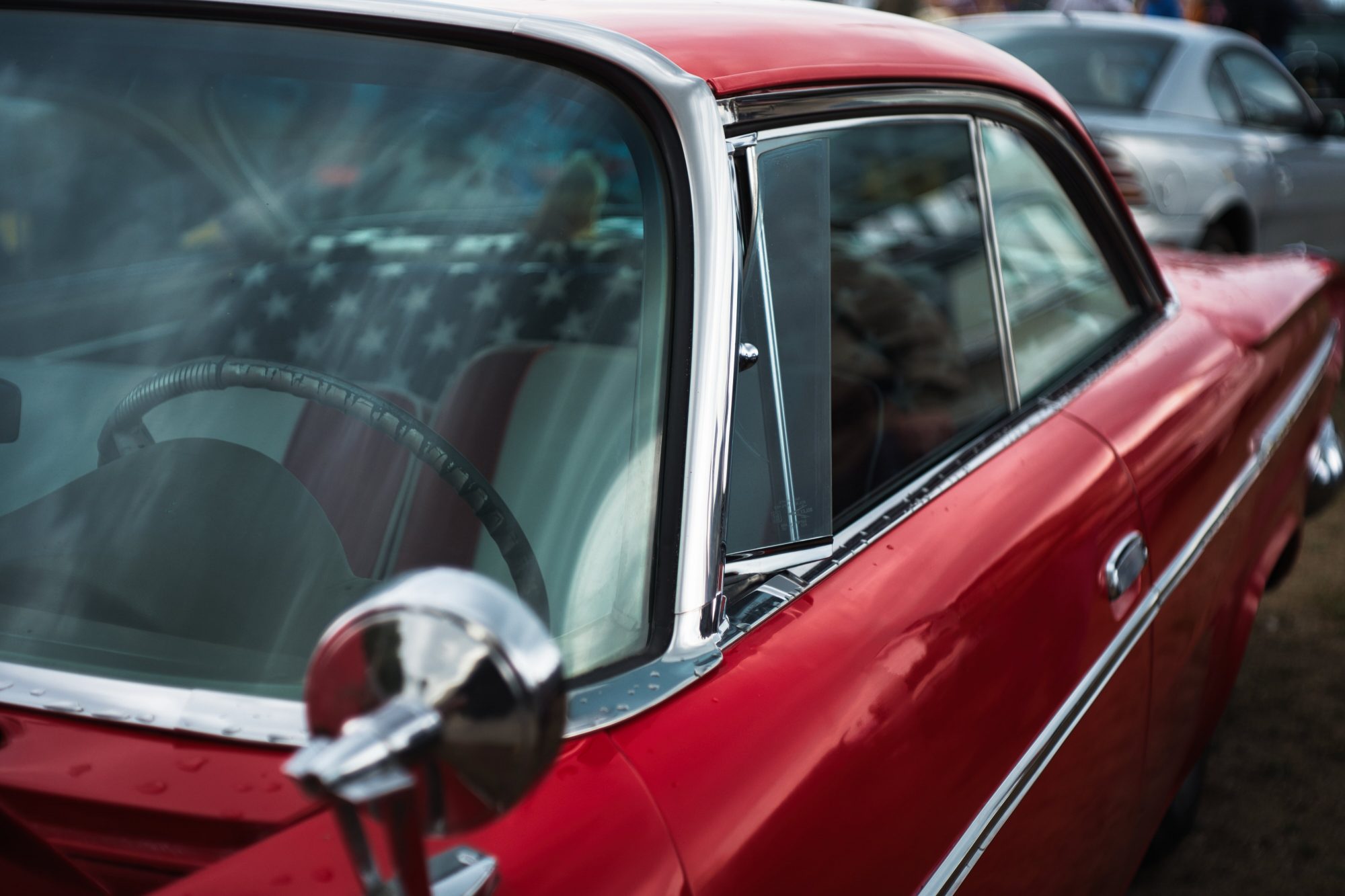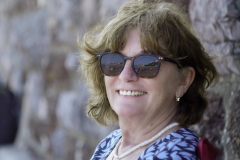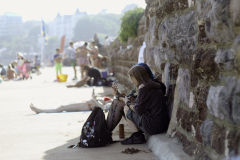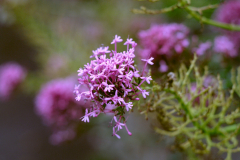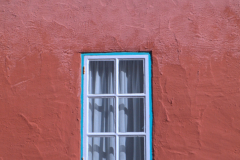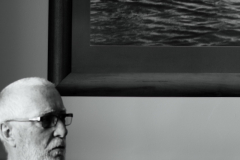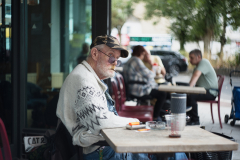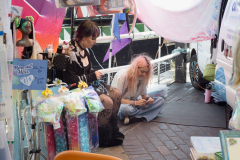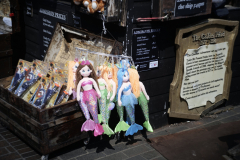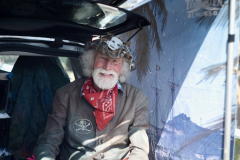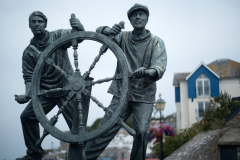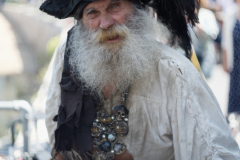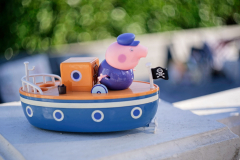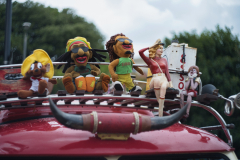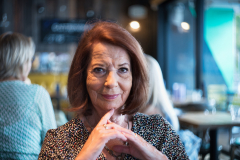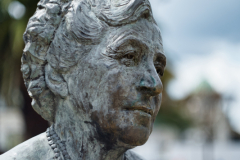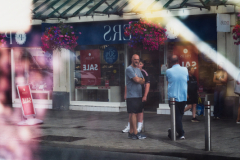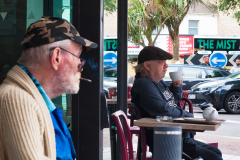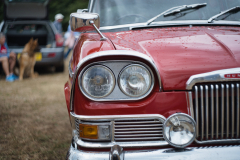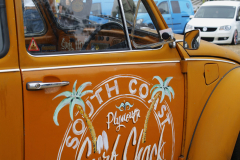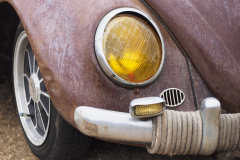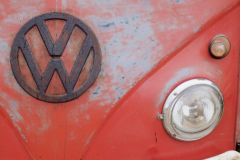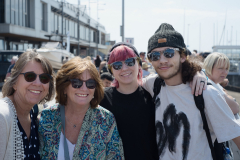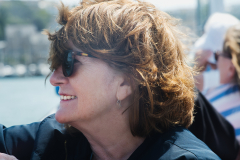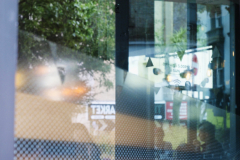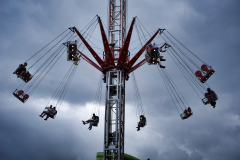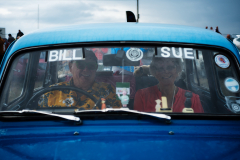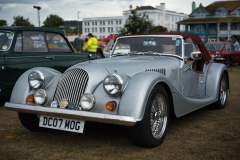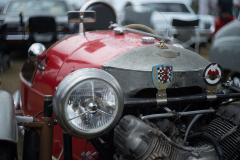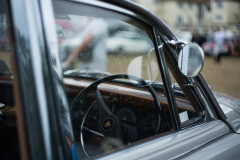Today we are going to be talking about vintage lenses and whether they are manual mayhem or nostalgia on steroids. Sound good? Get stuck in!
If you have seen any of my social media posts you’ll know that I love old gear! I can’t help myself. I just love what old lenses and cameras can do for my photography. Am I alone? No, there are tens of thousands of photographers out there who think just like me. So, is there something in this or, is it all just hot air? Well, hopefully in the next 10 minutes or so read you are going to know one way or the other.
Now, there are many reasons for buying old gear rather than new. Price has to be one key factor; old cameras and related gear are generally much cheaper to buy, well, for the most part. If you are seeking out a Leica M9 you probably won’t find one under a couple of grand, but, in general terms, old gear is the way to go if you’re on a tight budget.
My cameras, for example, range from 1976 onwards and in the early days, it was all film gear. I still have something like 5 or 6 old film cameras knocking around and indeed, every so often I go soft in the head and go through the pain of shooting with them and processing the film. Crazy eh?
The Advent of Digital Photography
Although digital photography goes back to the 1980’s. indeed, even before this in the laboratory. it was only with the advent of consumer focused digital photography in the early 1990’s that things began to change. The very first digital cameras were from companies like Kodak who launched models such as the Kodak DCS which utilised a CCD sensor housed in a Nikon body. Things moved rapidly from there as CCD sensors became smaller and could be housed in compacts and smaller bodies. Early cameras such as the Olympus D200-L, as well as a whole range of other body styles soon began to hit the shelves and by 2010 there were a huge number of DSLR and compacts available to the consumer. My oldest digital cameras, both CCD sensor compacts, date form around 2004. These are the Kodak DX6460 and Olympus C-765UZ. Although nowhere near the optical standards of today. I never cease to be amazed at the film-like nature of the images they produce.
Of course, things are very different today and we all have access to modern digital cameras, mostly mirrorless and indeed, phones with digital cameras embedded. Digital then is very much the way to go. However, what do you do if you want to emulate film, or at least, capture the emotion that we so often see in old film images. Well, you simply buy old cameras and even older lenses! It’s quick, easy and cheap. You just have to forego some of the benefits of shooting with newer, all singing and dancing lenses for the most part.
But what about the camera, what role does this play in all of this? Do I need to buy vintage everything or can I use my ultra-expensive mirrorless camera with old lenses. The answer to this of course is dependent on your means, your requirements for your photography overall and what you are comfortable shooting with. I love to experiment but out of my cohort of friends who are keen photographers, I pretty much stand alone or at least there are only one or two other photographers that I know that support my use of vintage gear. I often wonder why this is because the whole point of photography surely is to experiment and develop. I can’t fault any of my friends for not going down the route I have chosen, they are all good photographers, but I do wish that some would join my journey from time to time.
CCD vs LiveMOS (NMOS) – The Eternal Debate about which is Better!
Back in the 1990’s, practically every digital camera utilised a CCD sensor. That changed in the early 2000’s when Leica, Panasonic and Olympus formed an alliance to market CMOS sensors with a slight design change. This variation was the NMOS sensor although it is perhaps better known as MOS or LiveMOS. My earliest NMOS sensor cameras are the Panasonic Lumix L1 and the Leica Digilux 3, which are practically the same and both excellent cameras of their time. I shoot these quite regularly and there’s a nice little Facebook group that has started up which focuses on LiveMOS sensor cameras so take a look here.
Although there is much debate ongoing about whether CCD is better than LiveMOS, or indeed, vice versa, in reality they seem to produce pretty much the same results to my eyes. If there is a difference in image IQ, colours etc, it’s generally between the older and newer cameras of a given sensor type, e.g. Olympus E1 vs Olympus E-500 in the CCD world, Leica Digilux 3 and Olympus PEN E-P1 in the LiveMOS world. I love both CCD and LiveMOS output so I have a foot in both camps but there are many that believe that CCD sensors are the Holy Grail of digital photography.
Here are a a few LiveMOS images taken with either the Leica Digilux 3 + Helios 44M 58mm f2 or the Leica Digilux 3 + Leica R Elmar 35-70 f3.5, both excellent manual focus vintage lenses.
The reasons for this love of CCD are legion but relate mainly to the way in which the sensor renders colour and tone. You need to remember that photographers that shoot CCD or LiveMOS sensor cameras today are generally searching for a more filmic look than the images produced by say, modern CMOS compacts and phone cameras. Colours form CCD and LiveMOS sensors are generally thought to be more saturated than from sensors such as CMOS and the tones approximate better to film, i.e. they handle highlights in a similar way to the highlight fall-off in film. Personally, I don’t subscribe to this idea as film has a unique way that it deals with highlights and that is extremely difficult to emulate digitally, certainly in-camera. You can closer to this through post-processing of course but it is still a compromise. Besides, most modern cameras now allow the customisation of jpegs in camera and Fujifilm, for example, provide in-depth customisation in-camera which enables photographers to get close to film looks with minimal effort. In fact there are many websites and Facebook groups dedicated to sharing the recipes for say Kodak Portra, Kodachrome and Fujifilm Superior emulation to name just a few.
I’ll update this post with a few CCD images taken with a manual focus vintage lenses as soon as I have some.
Vintage Lenses in Modern Usage
Now, the title of this article is Vintage Lenses – Manual Mayhem or Nostalgia on Steroids and the reason for this is that, certainly in my experience, old vintage lenses is where the magic comes from. There’s a lot of reasons why you should be considering using vintage lenses rather than modern, all-singing and dancing auto-focus lenses. A primary reason is cost. Vintage lenses can be had for peanuts if you are prepared to search and wait. All of the lenses in the list below were under £20 with the exception of the Konica AR Hexanon 40mm f1.8, this cost me £50. In fact the adapters cost me more in practically every case!! Add a good quality manual lens to any camera, new, old, Film SLR, CCD, CMOS or LiveMOS and your photos can come alive. That being said, they are not without their quirks and they certainly aren’t for everyone!!
Another reason is that with modern focusing aids, any vintage lens can give amazing results. Focus peaking for example enable you to nail focus every time. You also have the opportunity to zone focus which enables you to create interesting effects such as here in the image below. Sure you can do this with Spot Focus but some photographers never come off of matrix focussing so it’s anyone’s guess what you’ll get in focus. I know what I will get in every single shot I take.
Zone focusing also allows you to walk around and instantly shoot without any need to refocus. Point, compose and shoot, done. No focussing required.
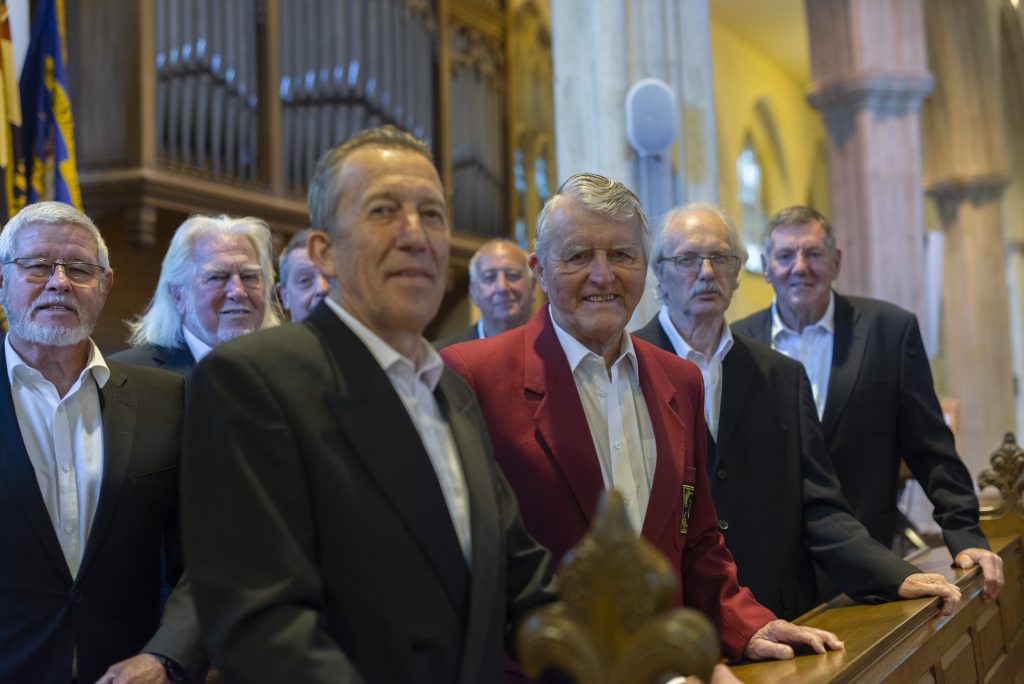
Another reason for buying and using vintage lenses is their the optical design and coatings; in some cases even the lack of coating. These introduce aberrations which can actually enhance any image. Hell, even the radioactivity of the lens can affect the end result. The point is that some, or indeed, all of these factors can play a role in making your images stand out and look, well, film-like! But there’s more!
Your shooting style changes, for example you slow down because it’s harder to focus accurately and quickly, certainly on old cameras like an Olympus E-300, as many vintage digital cameras don’t even have live view let alone focus peaking or manual assist features. All of these factors add-in uncertainty and it’s that uncertainty that makes the difference, certainly for me.
Now, many people will shoot off a list of modern-day lenses that will make your photos eye-droppingly gorgeous. It’s true, they exist. They are however usually auto-focus and if they are not, they are fisheyes or very wide lenses. I have one, the Samyang 12mm f2. It’s cheap, and it works brilliantly on my Fuji x-T1. It creates gorgeous images full of saturated colour and lovely tones with nothing in the way of distortion. I guess I could buy an adapter for OM 4/3 and M43 and use it on my old Olympus and Lumix cameras, for example my old Olympus E-300 and my Lumix L1. In fact, I might well do that as it would be fun to compare it with my older vintage lenses.
For me then, the fun is in researching and buying old lenses – I try to pay virtually nothing – and then to try these out on older LiveMOS and CCD cameras. In fairness I also use them on my Lumix S5, which has a CMOS sensor, where they work beautifully with the right adapter.
Let’s Talk about some Specific Lenses
Some people have a huge arsenal of vintage lenses. I don’t – yet!! Currently I own the following vintage lenses:
- Helios 44M 58mm f2
- Carl Zeiss Jena 50mm f2.8
- Konica AR Hexanon 40mm f1.8
- Meyer-Optik Gorlitz Oreston 135mm f2.8
- Pentax SMC 55mm f1.8
- Pentax M 50mm f2 – Not Tested
- Canon FD 28mm f2.8 – Awaiting delivery!
Any one of these seven lenses would be a good start point for anyone starting out with vintage lenses but today I only want to talk about the first five.
So, what tempted me to buy these particular lenses? In as short an answer as possible, research! All are great quality lenses producing creating gorgeous saturated colours and tones when used closed down, interesting and sometimes, fantastic bokeh, when opened up. I don’t have a favourite but the craziest bokeh comes out of the Helios 44M while the nicest lens for street, so far, is the Hexanon 40mm f1.8. The other lenses all do an amazing job, even the Meyer-Optic Gorlitz Oreston 135mm, f2.8 which I know is a somewhat unusual lens for the modern day shooter. Back in the 1960’s and 70’s though it was a different matter, it was a lens focal length that most people owned.
Here’s one of my first shots ever using the Helios 44M 58mm f2 on my Lumix s5. A little under-exposed maybe but a good example of what a vintage lens can achieve in an ad-hoc photo situation.
And here’s another shot using the Helios 44M, this time out and about for a bit of candid / street photography.

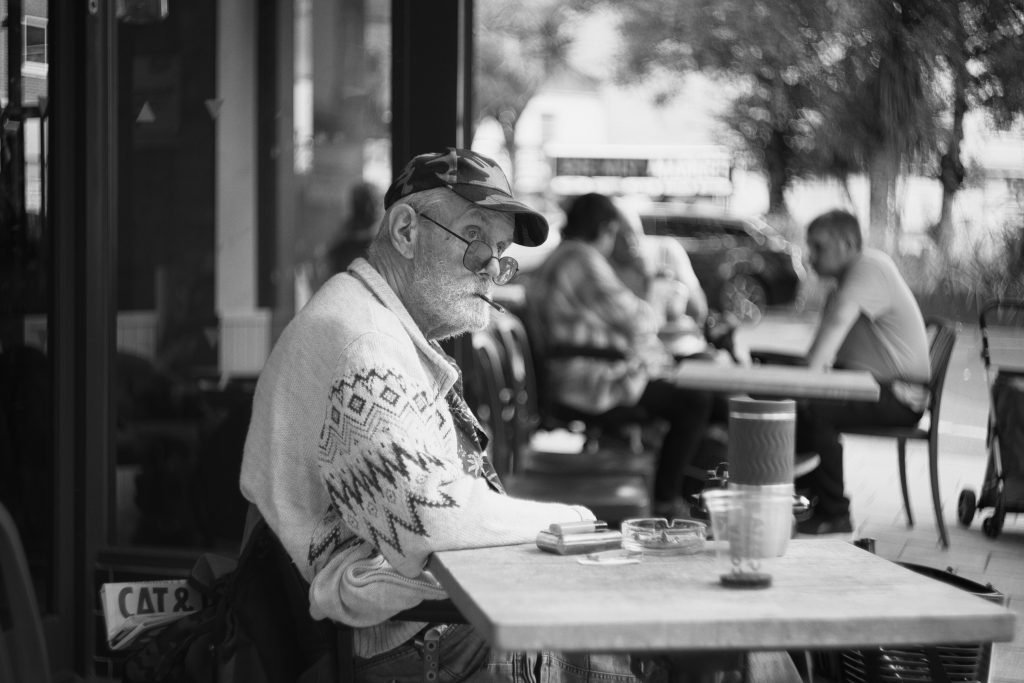
Let’s look at some other examples. These were mostly taken using the Lumix S5 with an appropriate adapter but a few were taken using an Olympus PEN E-P1, again with an appropriate adapter. I intend to go out and shoot most of these lenses on some older CCD and LiveMOS cameras but for the most part, I have only shot them on the Lumix S5 so far.
Shooting Vintage Lenses | Camera Settings
Given that all of these old lenses have aperture rings, that is what you will use to control the aperture that you shoot at. The first thing that you are going to need to do is to tell your camera that there is no connectivity between the camera body and the lens. You do this using the camera menu or perhaps there is a switch on the camera body that does the same job. On my Leica Digilux 3 for example there is a MF setting on the body and a setting in the menu called NO RELEASE WITHOUT LENS. On my Lumix s5 I simply set a switch on the body to MF and in the menu, I set SHOOT WITHOUT LENS to ON and I make sure that Manual Assist and Focus Peaking are both set to ON. I cannot tell you how useful these latter two features are when shooting a manual vintage lens.
Once your camera is all set to go, you will just need the correct adapter, e.g. K/AR – Leica L mount in the case of the Hexanon AR 40mm f1.8 on the Lumix s5, M42 – OM4/3 on any of my Four Thirds bodies, etc etc. In fact in some cases, the adapter costs more that the lens!! For example, URTH sell their adapters at anywhere between £39 – £49 pounds, although I bought mine for just £12 on eBay. K&F are no better, their prices are typically around £25. Since the Carl Zeiss Jena 50mm f2.8 cost me just £12 on Ebay, as you can see that adapters can end up being the limiting factor here! The good news is that many vintage lenses use M42 so that’s a good place to start, many lenses, one adapter!
So, Let’s get real about the Problems of shooting with old Manual Lenses!
Firstly, let me just say that with perseverance, you can use these old lenses on any inter-changeable lens camera, of any age. The major problems you will find will only relate to focusing. Set your camera to MANUAL FOCUS | SHOOT WITHOUT LENS and off you go. If you have a camera with no useful aids for manual shooting, e.g. manual assist, then your ability to be able to hit focus is going to be what matters. It’s likely then that you are going to miss focus on a number of your shots. Cameras where I have problems with are my Olympus PEN E-P1 , this has an LCD screen only and while it does have a manual assist setting (10x magnification), in bright sunlight you can pretty much forget about it as you can’t really see anything on the screen. Other of my cameras that have no useful manual assist functions are my Olympus E-300 and E-500. Here, it is down to pure luck and a good eye if I hit focus, especially when the lens is wide-open.
You can however get around this problem to a certain degree by shooting at say, f8 because you’ll have a lot more latitude for getting everything in focus from a few feet away to infinity. It’s a neat trick that gets better and better as the lens focal length decreases. For example, on a really wide lens like the Samyang 12mm f2 I mentioned earlier, you can walk about all day with the lens set to f5.6/f8 and simply point and shoot without ever refocussing again simply by setting focus on an object / subject two to three metres away from you. For the rest of the day, everything will be bang on focus.
This method works similarly well on old vintage lenses but it will work best on lenses in the 24 – 35mm range. Bear in mind though that if you are using an older CCD or LiveMOS camera, the focal length of the lens and the apparent aperture will change depending on the crop factor of the camera you are using. This also of course affects more modern CMOS cameras such as the Fujifilm X series, Nikon FX series and others. On a full frame camera no such issues exist.
Beyond focusing issues, there are few more problems. Old glass often have optical issues which actually make them attractive to modern day shooters. Flare and corner drop-off are just two possible examples of flaws when using vintage lenses. That being said, used artistically, these so called flaws can actually make your image come to life. How often for example have you applied a vignette in post? Well in some cases, for example with the Helios 44M, you don’t need to worry about that.
In Conclusion
Vintage lenses are a great option for anyone looking to explore their photography beyond shooting on AUTO, for those looking for defects to exploit and for those searching for images with lots of emotional content. With vintage glass you’ll get all of these these attributes with the right lens. While there are lots of lenses to avoid, none of the lenses mentioned here are expensive. My most expensive vintage lens, at the moment, is the Konica AR Hexanon 40mm f1.8 which cost me just £50. All of the others costs me less than £20 each. Price is currently not a barrier to buying and trying out vintage lenses.
Of course, and as i have said, using vintage glass is not always easy, especially if your camera is pre 2010 and doesn’t have manual assist features. For these you’re going to have to work a little harder to nail focus alongside nailing the composition. Manual focussing, especially if shooting wide open, is time consuming. Candid shooting is an art-form when using a manual lens. The best thing to do here is to pre-focus on something at the distance you normally like to shoot at and then the time to final focus and shutter press is greatly reduced.
There are however a number of real benefits of shooting vintage lenses beyond the cost. Because manual shooting requires more time, you can become a little more relaxed and take a bit more time to nail your composition. For landscape, none of this really matters as you’ve got all the time in the world. However, for those street shooters like me, the process can be a little more stressful until you’ve practiced it enough to feel confident in your approach.
Do I have a favourite vintage lens? In truth, no, not at this moment in time. Other then the Pentax SMC 55mm f1.8, which I have owned since 1976, I’ve owned the other lenses I’m talking about here for a few weeks at most. My first purchase was in fact the Helios 44M, followed shortly afterwards by the Carl Zeiss Jena 50mm f2.8. I have shot these two lenses the most and both blow me away in terms of the images I have taken.
The Helios 44M creates the most amazing bokeh wide open which together with the colour and contrast it produces, is going to make this lens a firm favourite, The Carl Zeiss Jena 50mm f2.8 is another stellar performer, pretty much on par with the Helios 44M. There’s very little between these lenses except at the very wide end where the Helios 44M wins on gorgeous swirly bokeh. Both lenses are going to feature big time in my images going forward.
A lens I think I am going to absolutely love is the Konica AR Hexanon 40mm f1.8, especially when coupled to the Lumix S5. This for me is the definitive street lens but I’ll also be researching and buying a 24mm or 28mm vintage lens very soon. The Pentax- A 28mm f2.8 for example is a current contender as in the Canon FD 28mm f2.8.
I’m going to be shooting a lot more photos with all of these lenses over the coming months so watch out for more articles coming soon. In the meantime, why not take a look at a few other articles I have written recently.
- Can a CCD sensor be as good as film? Let’s find out!
- What’s the best lens for street photography?
- 5 Reasons why I love the Samyang 12mm f2 NCS CS wide angle lens
- CCD vs LiveMOS – Vintage Camera Shootout
